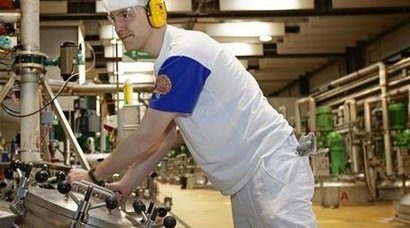
The pre-investigation is expected to last a year or more but if the results confirm the preliminary analyses, the collaboration will go ahead with the project. Novo Nordisk and Novozymes both have extensive factory facilities in Kalundborg, Zealand, Denmark, which produce enzymes and insulin. Biomass is a by-product of this process that is already used as a fertiliser on local fields and also by Novo Nordisk to produce biogas at installations around the country.
A project to explore the possibilities of also using this biomass for biogas production has now entered a new phase and Bigadan and DONG Energy have been invited to become partners in the project.
“It's an exciting project which will look at whether it's a good idea to use our production here in Kalundborg as a source of biomass for large-scale biogas production” said Gerrit Liebgen, Director EMA Operations for Novozymes, and Michael Hallgren, SVP (production of API) at Novo Nordisk. “It would mean that the biomass will both be used as a fertiliser – and for green energy. This doesn't just make sense for the environment, but also financially for our production.”
Karsten Buchhave, CEO of Bigadan A/S, added that with more than 30 years of experience in the biogas industry, Bigadan will more than meet the project’s expectations.
The partners are now conducting more detailed analyses and are aiming to have a new plant approved which will be built and owned by Bigadan and DONG Energy and located close to Asnæs Power Station, just south of Kalundborg. Novo Nordisk and Novozymes supply biomass from their factories in the city and from their facility at Fuglebakken in Copenhagen.
The plans mark a new direction for the collaboration between Novo Nordisk, Novozymes and DONG Energy, which have worked together for many years. The new plant will transform biomass into biogas which will then be upgraded to bio natural gas. This will then be fed into the natural gas network. Preliminary analyses indicate that it could be possible to produce six million cubic metres of natural gas a year, corresponding to the annual consumption of approx 4,000 households, or almost half the households in Kalundborg. Even after the biomass has been processed at the biogas plant, it can still be used as fertiliser at farms on Zealand.
The parties expect to be ready to make the final investment decision (FID) in the course of the next 12 months, and if it gets the go-ahead, the plant for producing biogas from biomass could be ready for commissioning in early 2018.
For additional information:

